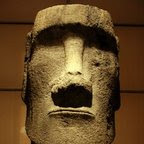INDOOR CULTIVATION
The Indoor Garden
Under artificial light, marijuana grows very fast; about 3-6 feet in three
months. As you want the lights fairly close to the plants, you must arrange
the lights so that their height can be altered. Hang the fixtures by a rope or
chain from the walls or ceiling, or from the top of a frame at least 6 feet
high, constructed of 2" X 2"s. The bar for hanging clothes on in a wardrobe
works quite well if it is high enough. Try to obtain an industrial type light
fixture with a built-in reflector, so that no light is lost. If your fixtures
are not equipped with reflectors, mount them on a sheet of white painted
plywood, make a reflector from white posterboard, or (at a pinch) sheets of
white cartridge paper. Don't use aluminium foil (see later).
Ten watts of tube power for each square foot of growing area is adequate for
healthy growth, but for a fast growing, lush crop, use at least 20 watts per
square foot. The size and shape of your garden should correspond to the light
system, so if the garden is 1 X 4 feet, use 2 four-foot tubes (80 watts). If
the garden is 8 X 2 feet, use 4 eight-foot tubes. One eight -foot tube emits
more light than 2 four-foot tubes, so try to use as few tubes as possible.
Marijuana can absorb up to 80 watts per square foot. Increasing the amount of
light will increase the growth rate, and the quality of your plants.
The garden should be surrounded by reflective surfaces to contain all of the
light. This will increase the efficiency of the lighting significantly and the
light will be nearly uniform throughout out the garden until the fixtures are
more than 2 feet high. A flat white paint is a better reflecting surface that
aluminium foil or glossy white paint. Flat white has about the same reflecting
capacity as aluminium foil, but reflects the light more uniformly. Paint walls
flat white, and hang posterboard, white plastic curtain, thick white paper
etc. on any open sides from the top of the fixture or frame. Sticking white
card over the inside of your wardrobe is fine if you can find the white card
for free. If your reflectors are the only enclosure for your plants, make them
waterproof, and they will insure a healthy humidity by containing moisture
evaporating from the soil and transpired by the plants.
Don't rely on training pets to stay out of the garden. Cats know damn well
what the stuff is, and they may chew the leaves or consume the best parts of
several plants. Dogs aren't much better either. Scratching in soil is in and
animals' nature. After all, look at all that time you spent teaching Tibbles
to use the litter tray. One moment of weakness can destroy months of work (see
"cuttings" in case of dire emergency). If the garden is accessible to pets,
surround it with chicken wire or heavy plastic. Ironmongers sell plastic on
rolls, and inexpensive plastic dropcloths. Cover the floor with plastic too.
It will protect your floor (and, if you're in a flat, your neighbours ceiling)
from possible water damage. The last thing you want is the council sniffing
around for leaks !
Artificial Light
The most effective and efficient artificial light for plant growth is
fluorescent light. There now follows a (very) brief physics lesson: The white
light you see emitted by a fluorescent bulb consists of all the colours of the
spectrum. The designation - Daylight, Warm White, Gro-lux, Optima, etc. - give
a heavy clue to what particular combination of bits of the spectrum each bulb
generates. Plants respond primarily to red and blue light, and for healthy
growth, a combination of these two colours must be provided. Blue light
stimulates leaf growth, produces short, stocky stems, and encourages robust
development. Red light is used for stem and root growth, and to promote
flowering.
The best fluorescent tubes are those that are specifically manufactured to
give out light useful to plants, and have a distinct purple hue. Some of these
are the Standard Gro-lux, Wide Spectrum Gro-lux, and plant Gro.
Sizes suitable for growing marijuana are 4,6, and 8 feet long. Regular
wattages for all of these tubes are about 10 watts for each foot of their
length (80 watts for an eight-foot tube). They also come in higher wattage
sizes. These are Power Twists, High Output (HO) and Very High Output (VHO)
tubes, the largest being a 215 watt, eight-foot tube. These high output tubes
are not always available, and tend to come a little on the expensive side. You
only really need to use them in an exceptionally large garden.
Regular fluorescent tubes can be used if you can't get Gro-tubes. They don't
work quite as well, but they will grow a perfectly healthy crop, and usually
work out more than a little cheaper. Daylight, or Cool White tubes can be used
in conjunction with either Natural White or traditional (plug-in) bulbs.
Normal bulbs and Natural White both provide the red component of light, while
the others tend towards the blue end. Use them in a one to one ratio, evenly
distributing the red and blue sources. Compared to the fluorescent tube, the
traditional lightbulb is about one third as efficient, has a much shorter
life, and can cause problems with it's excess heat. Not only might it scorch
your plants, it could set the whole house up if you haven't supported the
lights properly. But think what a wonderful time the fire-brigade would have
....
Subscribe to:
Post Comments (Atom)

No comments:
Post a Comment